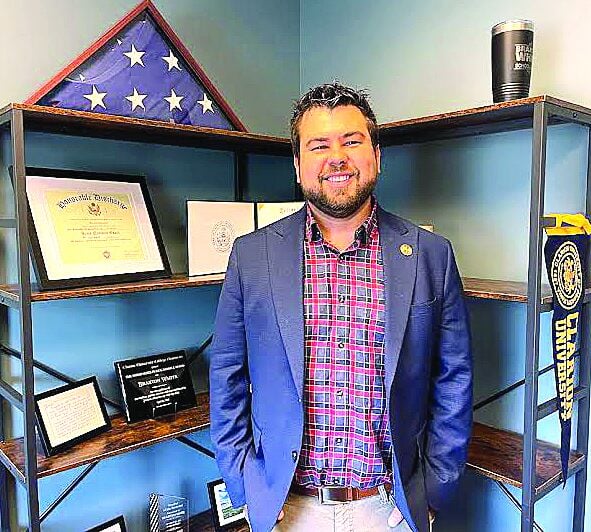Report on the Basic Education Equivalency Programme (BEEP) and its Contribution to Sustainable Development Goals in Cambodia
Program Overview and Objectives
An initiative in Cambodia is providing inmates with educational and vocational opportunities to facilitate their successful reintegration into society. The Basic Education Equivalency Programme (BEEP) is currently operational in seven correctional centers, aiming to equip inmates with foundational knowledge and practical skills. The program’s primary objective is to enhance post-release employment prospects, thereby reducing recidivism and supporting social stability. This initiative directly addresses several key United Nations Sustainable Development Goals (SDGs) by focusing on education, employment, and social inclusion for a marginalized population.
Alignment with SDG 4: Quality Education
The BEEP initiative is a direct implementation of SDG 4, which aims to ensure inclusive and equitable quality education and promote lifelong learning opportunities for all. By targeting inmates, the program extends educational access to a vulnerable group often excluded from such opportunities.
- Target 4.3 – Equal Access to Technical, Vocational and Tertiary Education: BEEP provides inmates, particularly those with approximately two years remaining on their sentences, with access to a structured educational program equivalent to lower secondary school.
- Target 4.6 – Universal Youth and Adult Literacy: The curriculum is designed to build foundational literacy and numeracy skills. Required courses include:
- Khmer
- Basic Math I
- Math II
- Chemistry
- Physics
- Gender Studies
- Fundamental Skills
- Inclusive Learning Environment: To ensure security is maintained within the correctional facilities, the program utilizes offline-content servers. Inmates are given personal accounts to access educational resources on electronic devices without compromising prison security, as noted by UNESCO Cambodia.
Contribution to SDG 8: Decent Work and Economic Growth
The program is fundamentally linked to SDG 8, which promotes sustained, inclusive, and sustainable economic growth, full and productive employment, and decent work for all. The core mission of BEEP is to break the cycle of crime and unemployment.
- Target 8.5 – Full and Productive Employment and Decent Work: By providing recognized certifications, BEEP enhances the employability of former inmates, enabling them to secure proper jobs and start businesses. This rehabilitation model is crucial, as lack of employment is a significant factor in re-offending.
- Target 8.6 – Reduce Proportion of Youth Not in Employment, Education or Training: The program specifically targets a population, including many young people, who are disconnected from the workforce and educational systems. It provides a direct pathway back to productive engagement in society. Support systems, including national employment agencies and provincial job centers, are made available to graduates to assist in their job search.
Addressing SDG 10: Reduced Inequalities
BEEP actively works towards SDG 10 by targeting the inequalities faced by incarcerated individuals and other vulnerable groups. The program is designed to empower marginalized populations and promote their social and economic inclusion.
- Target 10.2 – Promote Universal Social, Economic, and Political Inclusion: The initiative ensures that inmates are not left behind, providing them with the tools to overcome the stigma of their past. Government officials have expressed a commitment to ensuring graduates can find employment without discrimination. The program’s scope also extends to other vulnerable groups, including school dropouts, indigenous peoples, and people with disabilities.
Fostering SDG 16: Peace, Justice, and Strong Institutions
The program contributes to SDG 16 by strengthening the rehabilitative function of the justice system, which is essential for building peaceful, just, and inclusive societies.
- Rehabilitation and Reduced Recidivism: By focusing on skills development and reintegration, BEEP supports a justice system that is not solely punitive but also corrective. This approach helps reduce the likelihood of former inmates committing new crimes, contributing to safer communities.
- Building Confidence and Hope: Officials noted the commitment shown by inmates, expressing confidence that the skills and certifications earned will help them support their families and rebuild their lives, thereby fostering a more stable and just society.
Program Implementation and Partnerships (SDG 17)
The success and expansion of the BEEP program exemplify the power of multi-stakeholder partnerships, a core principle of SDG 17. The project is a collaborative effort involving national and international bodies from the public, private, and civil society sectors.
Key Partners:
- UNESCO
- Ministry of Education, Youth and Sport
- Ministry of Labor and Vocational Training
- Sipar Cambodia (Facilitating NGO)
- Swiss Agency for Development and Cooperation (Financial Support)
- Smart Axiata (Private Sector Contribution)
Operational Centers:
The program is currently active in the following locations:
- Correctional Center 1 (Phnom Penh)
- Correctional Center 2 (Phnom Penh)
- Correctional Center 4 (Pursat)
- Kandal Provincial Prison
- Kampot Provincial Prison
- Koh Kong Provincial Prison
- Prey Veng Provincial Prison
Analysis of Sustainable Development Goals in the Article
1. Which SDGs are addressed or connected to the issues highlighted in the article?
- SDG 4: Quality Education – The core of the article is the Basic Education Equivalency Programme (BEEP) which provides education and skills to inmates and other vulnerable groups.
- SDG 8: Decent Work and Economic Growth – A primary goal of the program is to help former inmates secure “proper jobs” and “decent and productive employment opportunities” to support themselves and their families.
- SDG 10: Reduced Inequalities – The program specifically targets vulnerable and marginalized groups, including inmates, school dropouts, indigenous people, and people with disabilities, aiming to provide them with opportunities and prevent discrimination.
- SDG 16: Peace, Justice, and Strong Institutions – By providing rehabilitation and skills for reintegration, the program aims to reduce recidivism (“commit crimes and be arrested again”), thereby strengthening the justice system and promoting a more peaceful society.
- SDG 17: Partnerships for the Goals – The article explicitly details a multi-stakeholder partnership involving UN agencies, government ministries, NGOs, and the private sector to implement the program.
2. What specific targets under those SDGs can be identified based on the article’s content?
-
SDG 4: Quality Education
- Target 4.4: Increase the number of youth and adults who have relevant skills, including technical and vocational skills, for employment, decent jobs and entrepreneurship. The article states the program “equips inmates with skills” and provides “skill development programs” so they can “start businesses, whether small or large.”
- Target 4.5: Ensure equal access to all levels of education and vocational training for the vulnerable. The article highlights that the program is designed for inmates and also supports “vulnerable groups, indigenous people and people with disabilities — who have dropped out of lower secondary school.”
- Target 4.6: Ensure that all youth and a substantial proportion of adults achieve literacy and numeracy. The BEEP curriculum requires inmates to take courses in “Khmer, basic math I, math II,” directly addressing literacy and numeracy skills.
-
SDG 8: Decent Work and Economic Growth
- Target 8.5: Achieve full and productive employment and decent work for all. The program’s stated purpose is to help inmates “get proper jobs on release” and “secure employment” to “reintegrate into normal life.”
- Target 8.6: Substantially reduce the proportion of youth not in employment, education or training (NEET). The article mentions the program is part of the “Decent Employment for Youth in Cambodia Phase II,” a UN initiative supporting “young Cambodians in securing decent and productive employment opportunities.”
-
SDG 10: Reduced Inequalities
- Target 10.2: Empower and promote the social and economic inclusion of all, irrespective of status. The program aims to help former inmates find jobs “without discrimination from their surroundings” and reintegrate into society, addressing the social and economic exclusion they face due to their past.
-
SDG 16: Peace, Justice, and Strong Institutions
- Target 16.3: Promote the rule of law and ensure equal access to justice for all. The program functions as a “rehabilitation” effort within the correctional system. By helping inmates find employment, it aims to prevent them from re-offending, which supports the overall effectiveness and fairness of the justice system.
-
SDG 17: Partnerships for the Goals
- Target 17.17: Encourage and promote effective public, public-private and civil society partnerships. The article explicitly identifies the project as a “joint initiative” between “UNESCO, the Ministry of Education, Youth and Sport, and the Ministry of Labor and Vocational Training, facilitated by Sipar Cambodia,” with financial support from the “Swiss Agency for Development and Cooperation” and contributions from “Smart Axiata.”
3. Are there any indicators mentioned or implied in the article that can be used to measure progress towards the identified targets?
Yes, the article mentions or implies several quantitative and qualitative indicators that can be used to measure progress:
- Number of participants enrolled: The article states that “12 others are enrolled” at Correctional Center 4, which is a direct measure of program uptake.
- Number of program graduates: It is mentioned that “five inmates have completed their studies,” indicating successful program completion rates.
- Geographic reach of the program: The program’s availability at “seven correctional centers and prisons across the country” is an indicator of its scale and expansion.
- Educational achievement levels: The mention of inmates who “achieved high exam scores in the program” serves as a qualitative and potentially quantitative indicator of the quality of education provided.
- Post-release employment rate: The ultimate goal is to “secure jobs after release.” Measuring the percentage of former inmates who find employment would be a key indicator of the program’s success.
- Recidivism rates: The article implies that a key goal is to prevent former inmates from “commit[ting] crimes and be[ing] arrested again.” A reduction in the re-offense rate among program graduates would be a critical long-term success indicator.
4. Summary Table of SDGs, Targets, and Indicators
| SDGs | Targets | Indicators |
|---|---|---|
| SDG 4: Quality Education |
|
|
| SDG 8: Decent Work and Economic Growth |
|
|
| SDG 10: Reduced Inequalities |
|
|
| SDG 16: Peace, Justice, and Strong Institutions |
|
|
| SDG 17: Partnerships for the Goals |
|
|
Source: cambodianess.com







